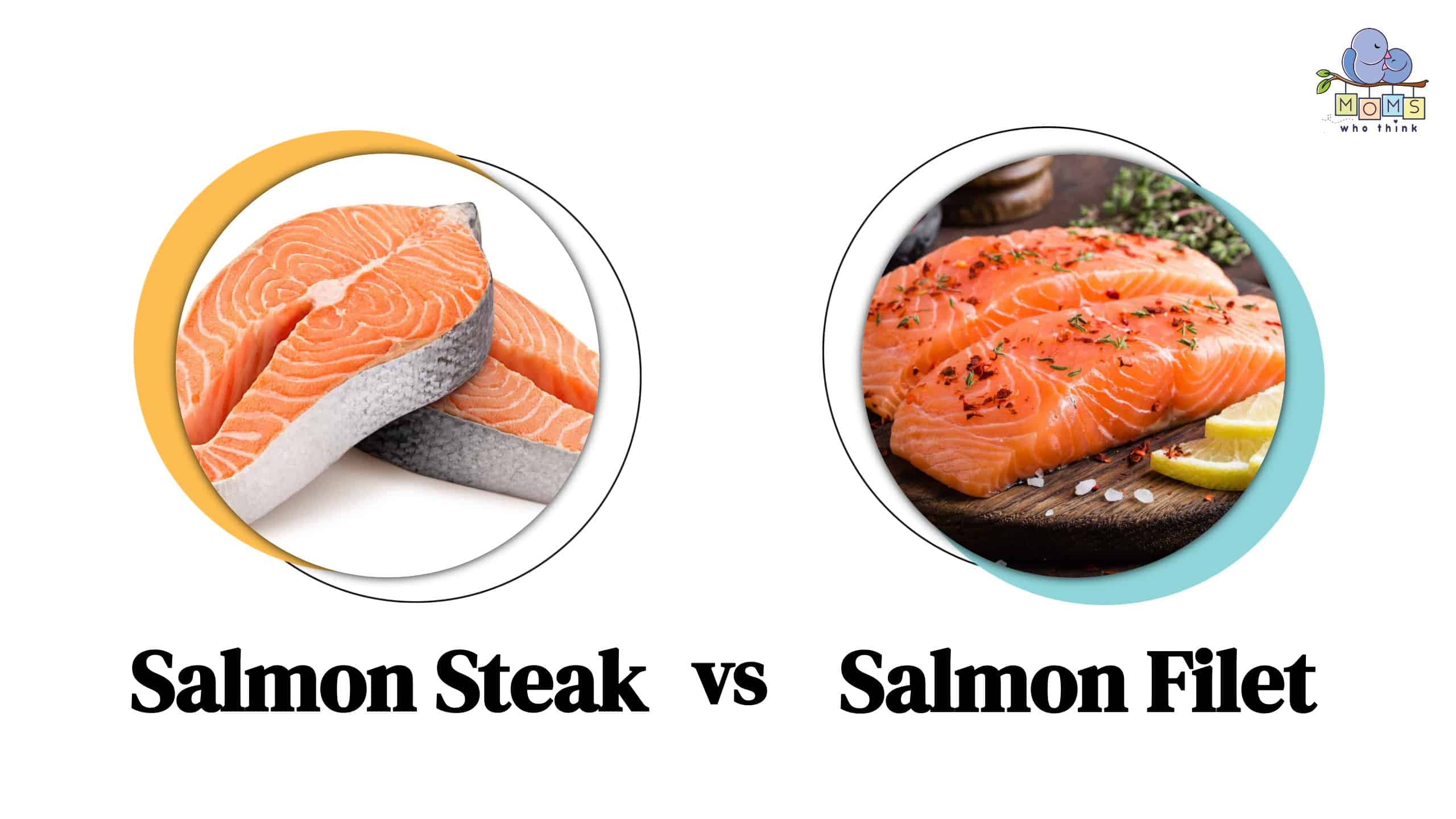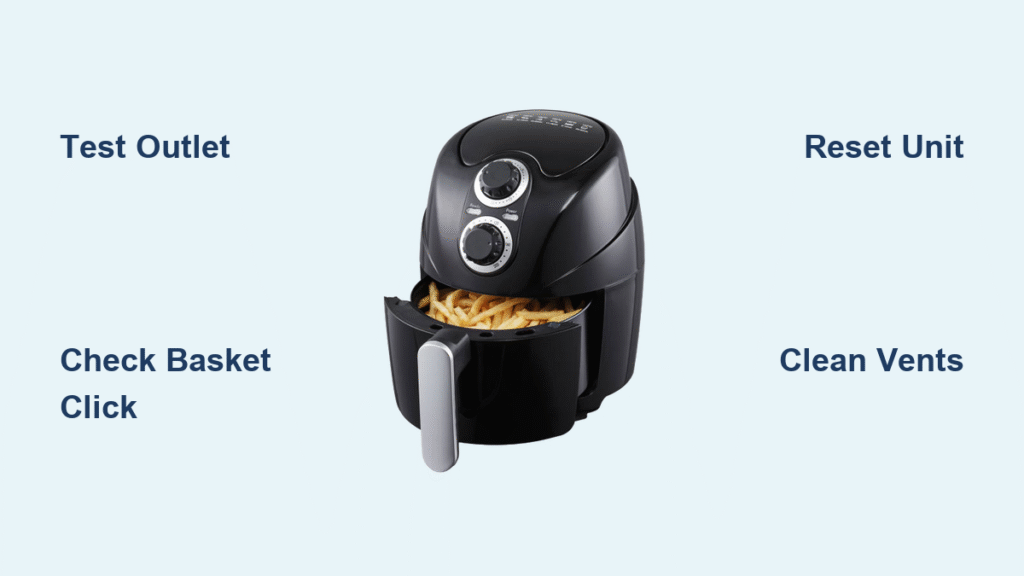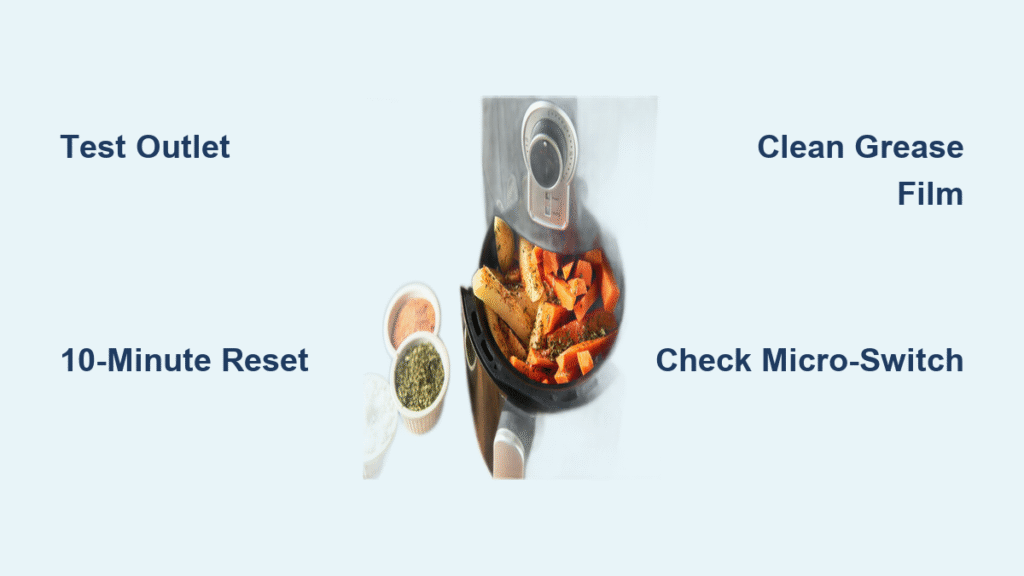Nothing ruins a quick weeknight dinner faster than dry, rubbery salmon emerging from your air fryer. You expected restaurant-quality results—crispy skin, moist flesh—but instead got chalky disappointment in under 10 minutes. The culprit? Air fryers cook too efficiently for delicate fish, turning perfect fillets into overcooked disasters with one minute too long. But here’s the good news: fixing salmon in air fryer is 100% preventable with precise temperature control, strategic timing, and the right prep. This guide delivers the exact science-backed method to transform your next salmon dinner from questionable to flawless—no guesswork, no dry edges, just consistently juicy results.
You’ll master the critical preheat step most skip, learn why thickness matters more than weight, and discover the 90-second glaze trick that prevents burnt sugars. Whether you’re using an Instant Vortex, Cosori, or generic basket model, these battle-tested techniques guarantee crispy skin and flaky centers every single time. Let’s fix your salmon for good.
Preheat to 400°F for Instant Crisp Formation
Skipping preheating guarantees soggy salmon. Your air fryer must hit 390–400°F (190–204°C) before the salmon touches the basket. Cold starts cause moisture to steam against the skin instead of searing, trapping water and preventing crispiness. Run your unit empty for 2–5 minutes—enough time for the heating element and fan to stabilize. Models like the Instant Vortex Plus show visible heat waves when ready; for others, place your hand near the vent (carefully!) to feel intense, dry heat. This isn’t optional: skipping preheating adds 2+ minutes to cook time and guarantees uneven texture.
Oil the Basket Even If “Non-Stick”
Non-stick coatings fail with delicate fish without this step. Spray or brush avocado or olive oil directly onto the basket (or foil/parchment liner) for 2 seconds—just enough to create a shimmering layer. Never skip this: salmon’s proteins bond instantly with ungreased metal, tearing flesh during removal. If lining with foil, cut it exactly to basket size so edges stay clear of heating elements. Pro tip: Place the oiled basket back in the preheating air fryer for the last 30 seconds—it superheats the surface for instant sear formation.
Choose 1-Inch Thick Fillets to Avoid Overcooking

Thickness—not weight—determines success. Target 5–7 oz fillets exactly 1–1½ inches thick at their center. Why? Thinner cuts (<1 inch) cook in under 6 minutes—barely enough time to develop crust before drying out. Thicker pieces (>1.5 inches) risk raw centers even after 10 minutes. When shopping, press the thickest part: fresh salmon should spring back firmly. Avoid uneven portions—batch cook only fillets of similar thickness. Wild-caught (leaner) needs stricter timing; farm-raised (fattier) forgives minor errors.
Thaw Frozen Salmon Overnight—No Exceptions
Never cook frozen salmon straight from the freezer unless you accept compromised texture. Thaw overnight in the fridge, then pat completely dry with paper towels for 20 seconds per side. Ice crystals = steam = soggy disaster. If in a rush, submerge sealed fillets in cold water for 20 minutes, then dry aggressively. Moisture is the enemy of crispiness—any dampness steams the fish instead of frying it.
Apply the 4-Ingredient Dry Rub Without Burning

The universal air fryer salmon rub prevents dryness while building flavor:
– 1 Tbsp oil (creates moisture barrier)
– 1 tsp garlic powder (no fresh garlic—it burns)
– 1 tsp paprika (smoked adds depth)
– ½ tsp kosher salt (draws out moisture for crisp skin)
Mix dry spices with oil first to form a paste—this prevents herbs from scorching. Rub into all surfaces, including edges where flavor evaporates fastest. For lemon-pepper or Cajun twists, swap paprika for an equal amount of your blend. But save sugary glazes (maple, honey, brown sugar) until the final 90 seconds—sugar caramelizes fast at 400°F and turns bitter if applied early.
Dry Fillets Aggressively Before Seasoning
Pat thawed salmon with paper towels until no moisture transfers to the cloth—this takes 30+ seconds. Even hidden dampness creates steam that steams the fish instead of crisping it. Let it rest uncovered in the fridge for 15 minutes if possible; this draws out residual surface water. Never rinse salmon—it re-introduces moisture. If fillets feel wet after patting, press firmly with a clean towel for 20 seconds. Dry = crisp. Wet = rubber.
Cook Skin-Side Down for 7 Minutes at 400°F
Place fillets skin-side down in a single layer with at least 1 inch between pieces—crowding causes steaming. Set timer for 7 minutes at 400°F for 1-inch-thick cuts. Do not flip: air fryers circulate heat from all sides, so flipping isn’t needed and risks breaking the fish. At 5 minutes, peek for visual cues: edges should look opaque and slightly caramelized, while the center remains translucent pink. For thicker fillets (1.5 inches), drop temp to 390°F and add 2 minutes. For bite-sized cubes, cook 6–8 minutes at 400°F, shaking basket once at 4 minutes.
Pull at 135°F for Perfect Medium Doneness
Check internal temperature at 6 minutes with an instant-read thermometer. Insert into the thickest part (avoiding bone or pan). Pull salmon at 135°F—carryover cooking will raise it to 140–145°F during the mandatory 2-minute rest. No thermometer? Gently press the center with a fork; it should flake slightly but still look moist. Overcooked salmon turns opaque and chalky throughout—it’s beyond saving past 150°F. Time is a guideline; temperature is gospel. Your air fryer’s wattage varies, so calibrate with a thermometer the first time.
Rescue Overcooked Salmon in 90 Seconds

If salmon looks dry but is still warm, act fast:
1. Slice against the grain into thin strips to minimize chewiness
2. Drizzle with 1 Tbsp lemony vinaigrette (3 parts oil, 1 part lemon juice, pinch of salt)
3. Flake into a warm grain bowl with roasted veggies—the residual heat gently reheats it
For severely overdone pieces, repurpose immediately: mash with avocado for salmon salad, or fold into scrambled eggs. Never reheat overcooked salmon in the air fryer—it guarantees rubber.
Store Leftovers Without Drying Out
Cool salmon completely before storing to prevent condensation. Place in an airtight container with a paper towel on the bottom to absorb excess moisture—this extends freshness by 24+ hours. Consume within 3 days for best quality. For freezing, wrap individual portions tightly in plastic wrap, then foil, then a freezer bag. Thaw overnight in the fridge; never microwave. Reheat only in the air fryer at 350°F for 3–5 minutes—this preserves moisture far better than microwaving.
Serve Immediately for Maximum Impact
Rest salmon for 2 minutes before serving—this lets juices redistribute. Then, hit it with fresh lemon juice (never bottled!) and flaky sea salt. The acid cuts richness, while salt crystals add texture. Pair with sides cooked alongside: toss green beans in oil and garlic, then air fry at 400°F for 5 minutes while salmon rests. For next-level presentation, top with chopped dill or chives—never dried herbs, which look sad on moist fish.
Master these fundamentals once, and your air fryer becomes a salmon-cooking hero. You’ll never fear dry, overcooked fillets again—just crispy skin, buttery flesh, and dinner ready in under 10 minutes. Remember the golden rule: preheat religiously, pull at 135°F, and dry aggressively. Your perfect salmon starts now.





